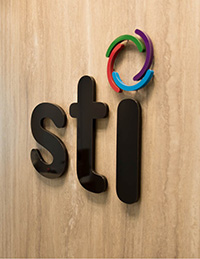Providing Financial Coverage For Canada’s Complex Health-CAre Environment
By Rajitha Sivakumaran
Prescription drugs form an essential part of Canada’s health-care system. In 2015, more than 500 million prescriptions were filled across the nation, costing about $30 billion. Twenty years ago, only a quarter of this amount was spent on prescription drugs. This sector of the health-care market has grown rapidly, but the number of Canadians neglecting their medication due to issues of affordability has grown as well. Over three million Canadians are presently uninsured or have inadequate coverage. For those with insurance coverage, deductibles and co-payments pose financial difficulties. Twenty-two per cent of all drug costs come out of pocket, making our prescription drug coverage system neither universal nor comprehensive.
Fifteen years ago, STI Technologies was created by three pharmaceutical executives to bridge the gap between affordability and accessibility. At this time, physicians regularly handed out drug samples to patients before providing an actual prescription. There were many issues associated with this practice, the lack of traceability being one major concern. The founders saw the need in the market to create an alternative way to run samples or trial prescriptions and a program was developed, which allowed doctors to hand out cards rather than physical samples. The patient would then take the card to the pharmacy to receive their prescription. This way, the products being used by patients could be tracked and the effectiveness of medication could be measured.
From this initiative, STI Technologies grew and as the years went on, the company expanded to include multiple applications and programs such as financial reimbursement and patient assistance programs. Although STI is headquartered in Halifax, Nova Scotia, the card programs are accepted by pharmacies across the nation. The company has worked with numerous hospitals, provincial governments, pharmaceutical companies and non-profit organizations.
“Our products enable access and choice and financial assistance to patients who are participating in the health-care landscape,” said Tim Gillis, STI’s president and CEO.
The organization also serves doctors by bringing awareness of the availability of additional funding options for patients. For example, doctors can initiate patients into suitable therapies, knowing that the treatment has been addressed financially. Patients who experience disruptions in coverage or even termination regardless of the reason can look to STI programs for the continuation of their treatments. Doctors can also expect continuity for a treatment that their patient is already on if their patient is enrolled in an STI card program.
Furthermore, if a patient is not refilling their prescription, intelligent intervention can be used to encourage them to become compliant again. “Our programs include engagement components where we endeavour to help patients when they become non-compliant as told by the data itself, as long as the patient has expressed consent to be communicated to,” Gillis said.
If a patient is unable to afford the drug or the medication has no coverage, STI’s cards and the technology behind those cards reimburse at the point of dispensation so that payment is automatic and simple for the patient and for the pharmacy to administer.
In addition, STI also provides patient support and financial services. “So when you have patients initiated on a therapy and they need to navigate that world of who is going to pay for their drugs, including insurance, governments and so forth, oftentimes the manufacturers will sponsor programs and caseworkers will provide that kind of support to patients,” Gillis said. Although the funding comes from pharmaceutical companies, STI serves as a neutral third party for their patients.
Innovation in health care
The card system has been in effect since the inception of the company, but three years ago the company launched a new program called innoviCares, an initiative that is proving to be very successful. Sponsored by pharmaceutical manufacturers, patients can sign up for free online or request cards through their doctor or pharmacist. The card works just like an insurance card. The patient simply takes the card to the pharmacy along with a prescription. If the medication they need is on the list of products covered, the card will automatically pay all or some of the cost of the prescription, depending on the type of benefit being provided.
“We often get that it’s too good to be true because it’s free,” Gillis said. In fact, two-time Olympic gold medalist Catriona Le May Doan, the company’s ambassador, uses the innoviCares card for her own medical needs.
STI has launched a transformation in the health-care landscape, a feat which has been recently recognized — the company was named one of Deloitte’s Technology Fast50™ Companies last year. Gillis attributes this success to the company’s ability to fill a unique market exigency — a petition for patient choice. “It’s supply and demand and the demand is certainly there,” Gillis said. When patients and physicians need access to medication but face interrupted or non-existent coverage, that necessitates the involvement of an intermediary party in the marketplace.
As the years have gone by, awareness of STI’s programs has increased and this recognition has contributed to the company’s growth as well. Technology and social media have allowed for this awareness to proliferate, but simply getting the word out through conventional patient-to-doctor conversations has also helped.
Increased awareness also contributes to the challenges of operating a company involved with pharma and financial coverage. “The toughest challenge is misconceptions by stakeholders whether that be government or pharmacy. Health care, in general, is a very complex ecosystem with many moving parts and competing interests, so we’ve had to expend energy dispelling any uncertainty or fear about the card programs,” Gillis said.
These misconceptions tend to centre on the commercial side of pharmaceutical products, but Gillis said, “Health care includes commercial aspects, but that’s just a fact of every industry throughout the world and the fact that there is a commercial aspect to health care doesn’t have to be a negative thing.”
But the increasing costs associated with health care are a reason for concern. On the one hand, new medications are coming into the market and improving health outcomes. However, they’re very costly to develop since they target specific disease states and certain populations of patients diagnosed with that disease. “Per patient cost for therapy is getting higher and higher. The good news is there is innovation in medicine. The bad news is it’s expensive,” Gillis said.
A numbers of parties, like individuals, governments and insurance companies, are tasked with paying for these treatments. The challenge lies with managing the escalating costs. “We don’t want innovation to slow down. We don’t want the therapies not to get into the hands of patients. It’s that balancing act of all the parties finding a way to optimize and deliver health care in a sustainable way,” Gillis said.
Technology plays a key role in producing a new and innovative health outcome. This combined with increased competition in the prescription drug market can help lower costs and improve patient choice. STI plans to continue acting on its vision of becoming a leading partner in patient health through the delivery of intelligent solutions.
“At the end of the day, we are confident and we know patients appreciate it,” Gillis said.
www.smartsti.com







